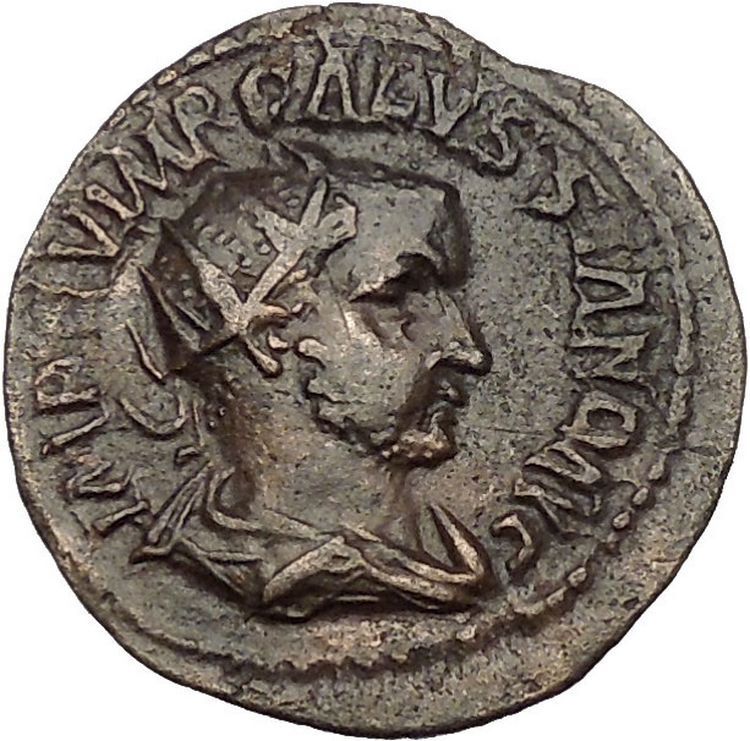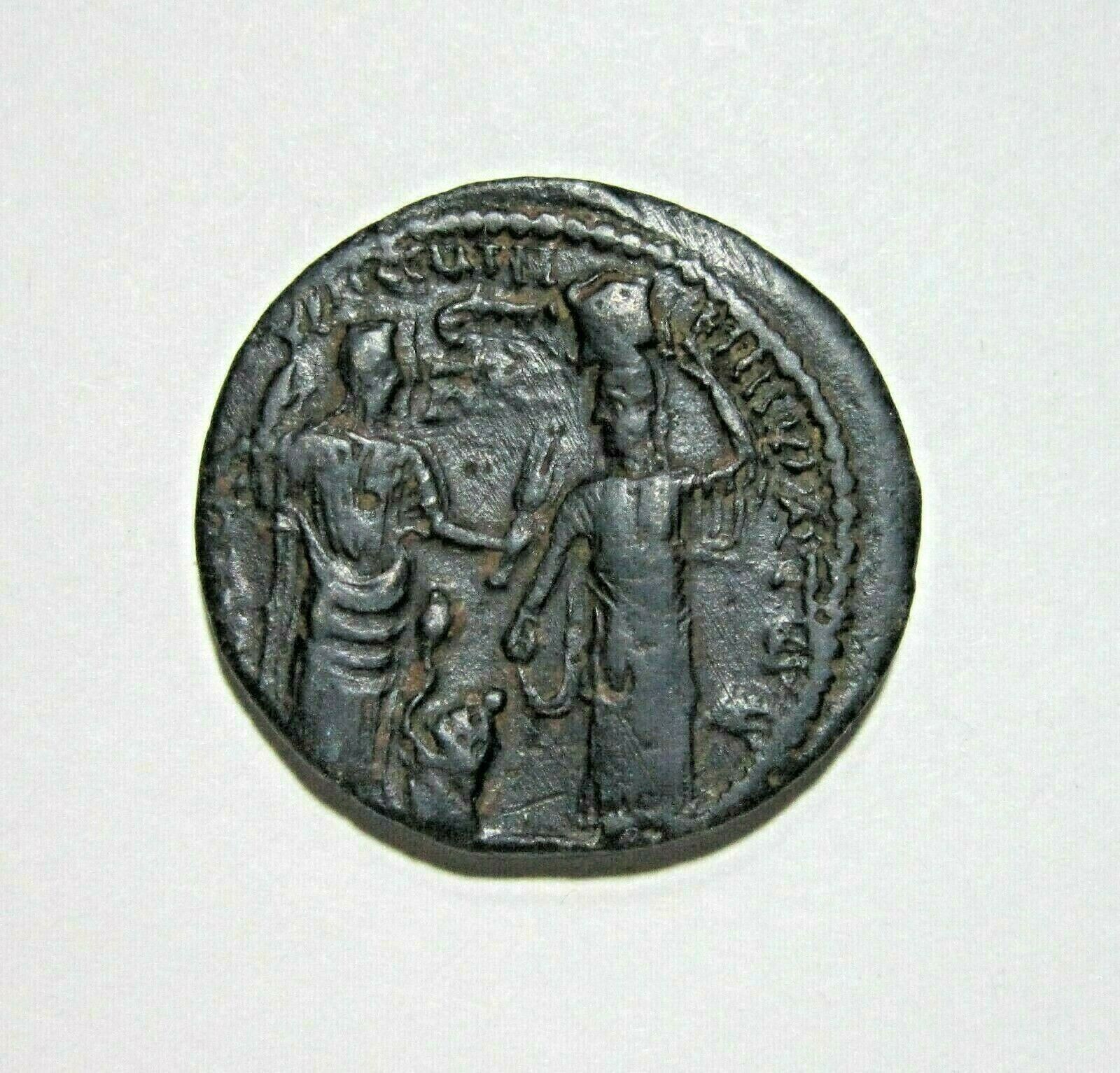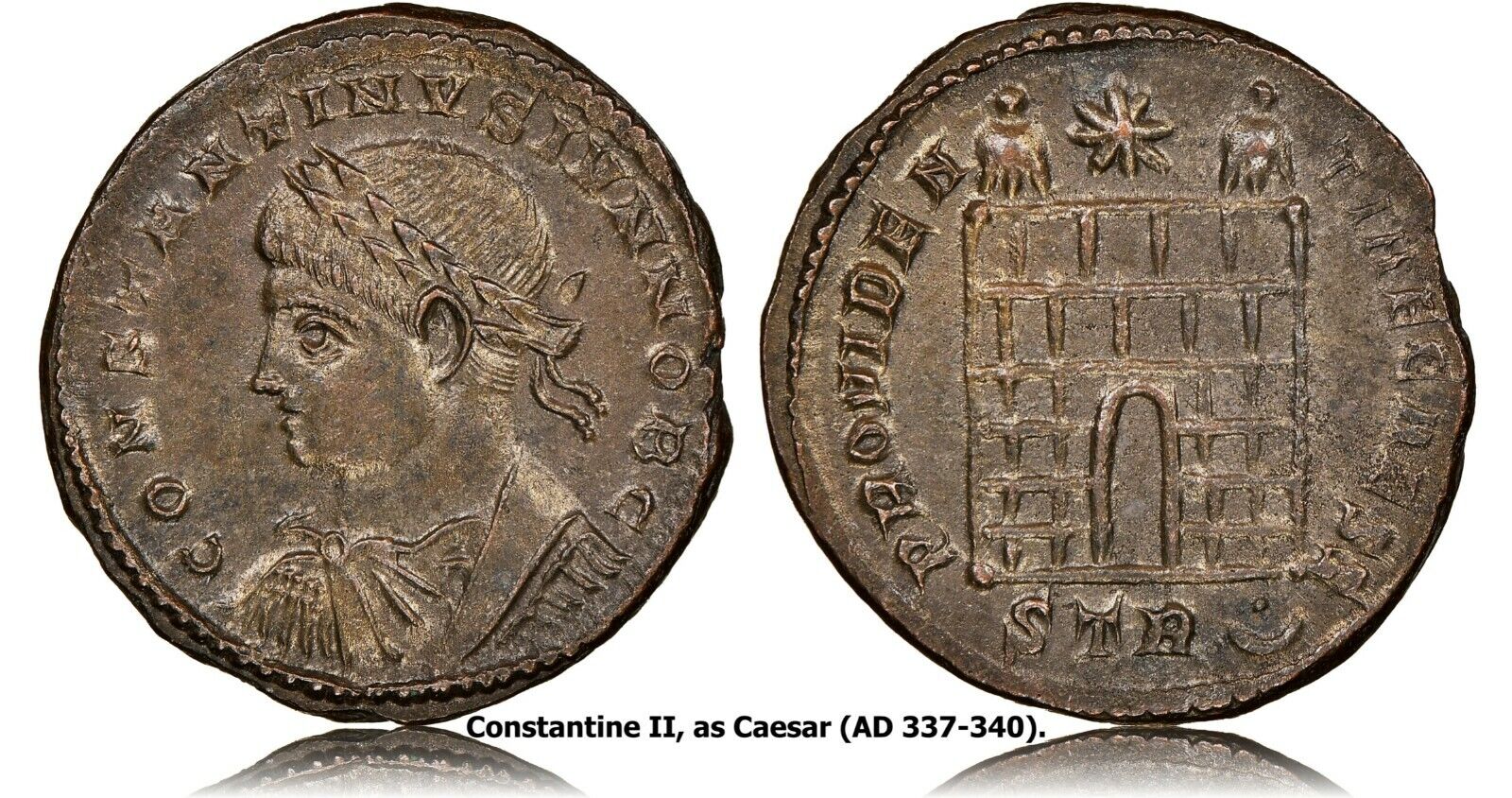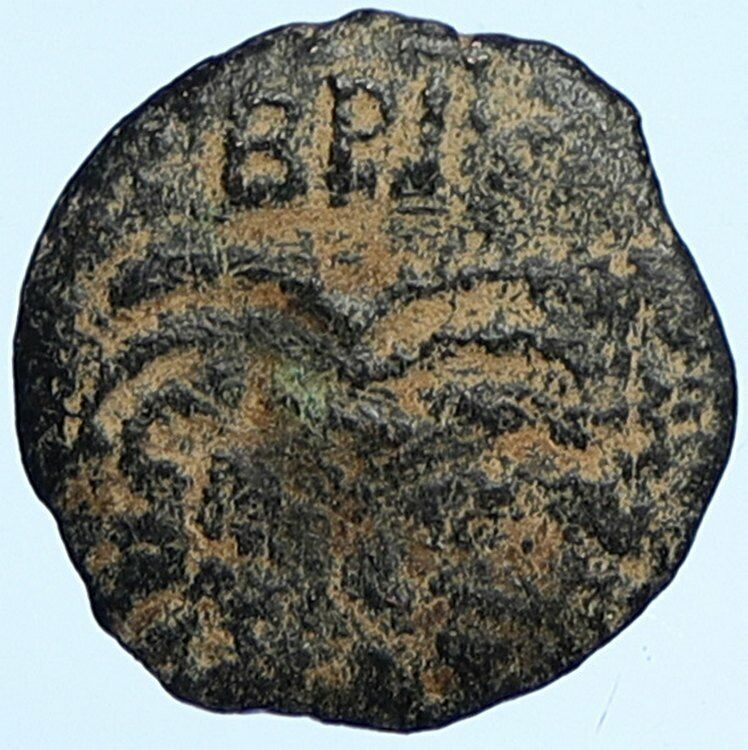-40%
VOLUSIAN 251AD Antioch in Pisidia Vexillum Legionary Eagle Roman Coin i53243
$ 95.04
- Description
- Size Guide
Description
Item:i53243
Authentic Ancient Coin of:
Volusian - Roman Caesar: 251-253 A.D. -
Bronze 23mm (7.14 grams) of Antioch in Pisidia
Reference: cf. Sear GIC 4381; SNG Von Aulock 4978-9
IMP C V M P CALVSSIANO AVG, Radiate bust of Volusian draped and cuirassed to right.
ANTIOCHIO CL, vexilium reading SR surmounted by eagle, between two legionary eagles, S-R to lower left and right of vexilium.
The legends on the coins of Pisidian Antioch are usually blundered from the time of this reign onwards.
You are bidding on the exact item pictured, provided with a Certificate of Authenticity and Lifetime Guarantee of Authenticity.
The
vexillum
(
English pronunciation:
plural
vexilla
was a
flag
-like object used in the
Classical Era
of the
Roman Empire
. The word is itself a diminutive for the Latin word, velum, sail, which confirms the historical evidence (from coins and sculpture) that vexilla were literally "little sails" i.e. flag-like standards. In the vexillum the cloth was draped from a horizontal crossbar suspended from the staff; this is unlike most modern flags in which the 'hoist' of the cloth is attached directly to the vertical staff. The bearer of a vexillum was known as a
vexillarius
or
vexillifer
. Just as in the case of the regimental colors or flag of Western regiments, the vexillum was a treasured symbol of the military unit that it represented and it was closely defended in
combat
.
Nearly all of the present-day regions of
Italy
preserve the use of vexilla. Many Christian processional banners are in the vexillum form; usually these banners are termed
labara
(
Greek
:
λάβαρον
) after the standard adopted by the first Christian Roman emperor
Constantine I
which replaced the imperial eagle with the "
Chi-Rho
" symbol
☧
.
The term Vexillum is also used by the
Legion of Mary
as the term for its standard. A small version is used on the altar and a full size Vexillum leads processions.
Jupiter is usually thought to have originated as a sky god. His identifying implement is the
thunderbolt
, and his primary sacred animal is the
eagle
, which held precedence over other birds in the taking of
auspices
and became one of the most
common symbols of the
Roman army
(see
Aquila
). The two emblems were often combined to represent the god in the form of an eagle holding in its claws a thunderbolt, frequently seen on Greek and Roman coins. As the sky-god, he was a divine witness to oaths, the sacred trust on which justice and good government depend. Many of his functions were focused on the
Capitoline
("Capitol Hill"), where the
citadel
was located. He was the chief deity of the
early Capitoline Triad
with
Mars
and
Quirinus
. In the
later Capitoline Triad
, he was the central guardian of the state with
Juno
and
Minerva
. His sacred tree was the oak. The Romans regarded Jupiter as the
equivalent
of the Greek
Zeus
, and in
Latin literature
and
Roman art
, the myths and iconography of Zeus are adapted under the name
Iuppiter
.
An
aquila
, or
eagle
, was a prominent symbol used in
ancient Rome
, especially as the
standard
of a
Roman legion
. A
legionary
known as an
aquilifer
, or eagle-bearer, carried this standard. Each legion carried one eagle. The eagle was extremely important to the Roman military, beyond merely being a symbol of a legion. A lost standard was considered an extremely grave occurrence, and the Roman military often went to great lengths to both protect a standard and to recover it if lost; for example, see the aftermath of the
Battle of the Teutoburg Forest
, where the Romans spent decades attempting to recover the lost standards of three legions.
Antioch in Pisidia
– alternatively
Antiochia in Pisidia
or
Pisidian Antioch
(
Greek
:
Ἀντιόχεια τῆς Πισιδίας
) and in
Roman Empire
,
Latin
:
Antiochia Caesareia
or
Antiochia Caesaria
– is a city in the
Turkish Lakes Region
, which is at the crossroads of the
Mediterranean
,
Aegean
and Central
Anatolian
regions, and formerly on the border of
Pisidia
and
Phrygia
, hence also known as
Antiochia in Phrygia
. The site lies approximately 1 km northeast of
Yalvaç
, the modern town of
Isparta Province
. The city is on a hill with its highest point of 1236 m in the north.
Gaius Vibius Volusianus
(d. August, 253) was a
Roman emperor
(251 - 253).
He was son to
Gaius Vibius Trebonianus Gallus
by his wife
Afinia Gemina Baebiana
. He is known to have had a sister, Vibia Galla.
The death of
Decius
in early June, 251 led to Trebonianus Gallus' elevation to the throne. Gallus adopted Decius' son
Hostilian
and made him co-ruler. Volusianus was named
Caesar
and
Princeps Juventutis
. Later in 251 Hostilian died of the
plague
and Volusianus replaced him as
Augustus
and co-ruler.
Father and son were both killed in 253 by mutinous troops in
Interamna
.
Frequently Asked Questions
How long until my order is shipped?
Depending on the volume of sales, it may take up to 5 business days for shipment of your order after the receipt of payment.
How will I know when the order was shipped?
After your order has shipped, you will be left positive feedback, and that date should be used as a basis of estimating an arrival date.
After you shipped the order, how long will the mail take?
USPS First Class mail takes about 3-5 business days to arrive in the U.S., international shipping times cannot be estimated as they vary from country to country. I am not responsible for any USPS delivery delays, especially for an international package.
What is a certificate of authenticity and what guarantees do you give that the item is authentic?
Each of the items sold here, is provided with a Certificate of Authenticity, and a Lifetime Guarantee of Authenticity, issued by a world-renowned numismatic and antique expert that has identified over 10000 ancient coins and has provided them with the same guarantee. You will be quite happy with what you get with the COA; a professional presentation of the coin, with all of the relevant information and a picture of the coin you saw in the listing.
Compared to other certification companies, the certificate of authenticity is a -50 value. So buy a coin today and own a piece of history, guaranteed.
Is there a money back guarantee?
I offer a 30 day unconditional money back guarantee. I stand behind my coins and would be willing to exchange your order for either store credit towards other coins, or refund, minus shipping expenses, within 30 days from the receipt of your order. My goal is to have the returning customers for a lifetime, and I am so sure in my coins, their authenticity, numismatic value and beauty, I can offer such a guarantee.
Is there a number I can call you with questions about my order?
You can contact me directly via ask seller a question and request my telephone number, or go to my About Me Page to get my contact information only in regards to items purchased on eBay.
When should I leave feedback?
Once you receive your order, please leave a positive. Please don't leave any negative feedbacks, as it happens many times that people rush to leave feedback before letting sufficient time for the order to arrive. Also, if you sent an email, make sure to check for my reply in your messages before claiming that you didn't receive a response. The matter of fact is that any issues can be resolved, as reputation is most important to me. My goal is to provide superior products and quality of service.











